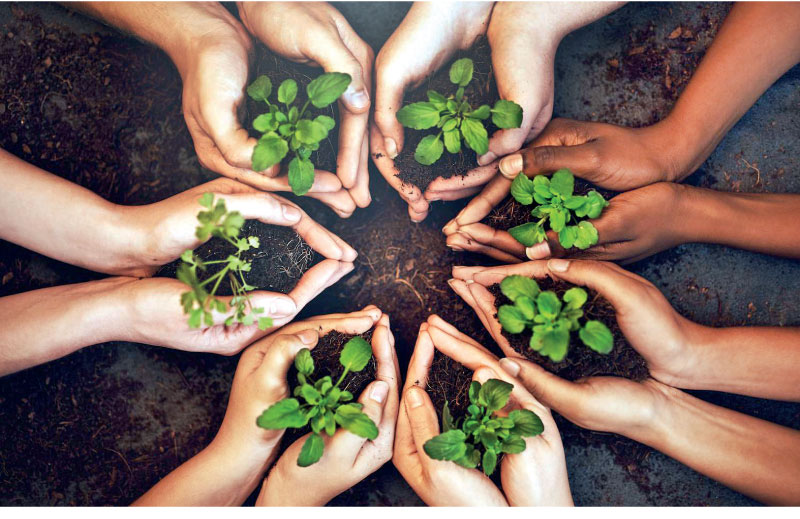Tuesday Dec 09, 2025
Tuesday Dec 09, 2025
Monday, 29 May 2023 00:06 - - {{hitsCtrl.values.hits}}

Sri Lanka can handle its growing waste management crisis and lessen waste’s negative environmental impact by introducing circular economy practices
 Sri Lanka has a long history, a diversified culture, and enormous natural resources. However, Sri Lanka, like many other developing countries, is confronted with a slew of environmental issues that require rapid response. To solve these difficulties, the circular economy concept has gained traction, and the construction of a circular economy precinct in Sri Lanka may provide several benefits to the country.
Sri Lanka has a long history, a diversified culture, and enormous natural resources. However, Sri Lanka, like many other developing countries, is confronted with a slew of environmental issues that require rapid response. To solve these difficulties, the circular economy concept has gained traction, and the construction of a circular economy precinct in Sri Lanka may provide several benefits to the country.
The circular economy is an economic structure that is designed to be restorative and regenerative. It seeks to maintain the best value and usability of goods, components, and materials while minimising waste and pollution. A circular economy precinct is a geographic area in which circular economy principles are used in the design, manufacturing, and consumption of goods and services. Establishing a circular economy precinct in Sri Lanka could provide significant economic, environmental, and social benefits to the country.
One of the most significant advantages of a circular economy precinct is the potential for economic growth in the country. Circular economy practises such as waste reduction and recycling, the creation of sustainable products, and the supply of circular economy services can all lead to new business opportunities. This can result in new job creation, increased economic growth, and the development of creative and sustainable business models. Furthermore, a circular economy can minimise the country’s dependency on imports while encouraging the use of local resources and skills, so supporting the growth of local industries and firms.
Another significant advantage of developing a circular economy zone in Sri Lanka is the opportunity to minimise pollution and combat climate change. Circular economy principles encourage resource efficiency, decreasing waste and pollution. This has the potential to significantly reduce glasshouse gas emissions as well as other environmental concerns such as landfills and ocean pollution. Sri Lanka can handle its growing waste management crisis and lessen waste’s negative environmental impact by introducing circular economy practices.
The creation of a circular economy area might also have substantial societal ramifications. Circular economy practises can help to build more sustainable and resilient communities by including people in the design and production of sustainable goods and services.
This can promote social cohesiveness and community resilience by instilling a sense of ownership and pride in local communities. Also, a circular economy can contribute to better health and well-being because less pollution and waste can benefit human health. To develop a successful circular economy sector in Sri Lanka, a complete policy framework that promotes circular economy concepts is required. This framework should incorporate laws and regulations that encourage sustainable production and consumption, assist in the establishment of circular economy firms, and give incentives for circular economy practises. Furthermore, the government should invest in research and development to foster innovation in circular economy practises and technology, as well as give assistance for education and training to strengthen local communities’ and enterprises’ capacity to apply circular economy practises.
Finally, the construction of a circular economy sector in Sri Lanka can provide significant economic, environmental, and social benefits to the country. Sri Lanka can address its rising waste management crisis, reduce its reliance on imports, and create new economic possibilities and jobs by supporting circular economy ideas and practices.
Furthermore, a circular economy can aid in the mitigation of climate change, the reduction of pollution and waste, and the enhancement of social cohesion and community resilience. Sri Lanka must build a comprehensive policy framework to assist the development of circular economy practises and technology, as well as to promote sustainable and resilient communities.
(The writer is a Research Candidate, Federation University Australia.)